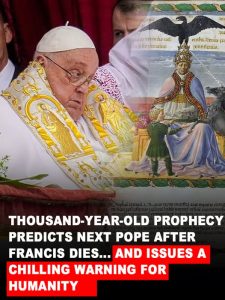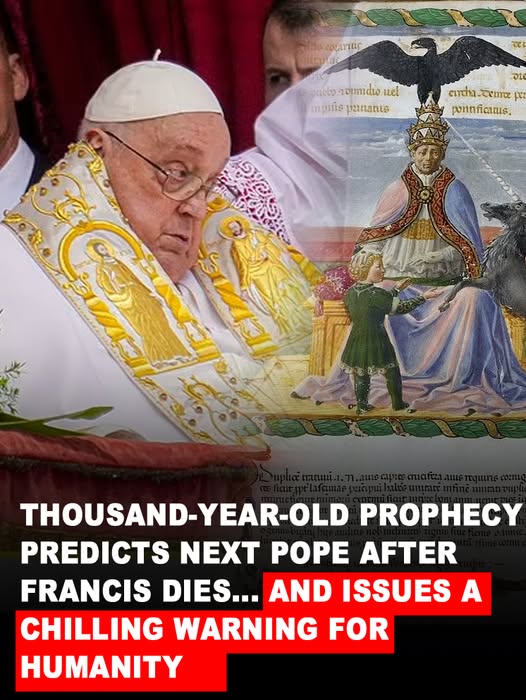Pope Francis’ unexpected death at the age of 88 has sent shockwaves throughout the Catholic world and beyond, but it has also shed new light on the Prophecy of the Popes, a mysterious text steeped in centuries of secret and debate. This little-known but genuinely intriguing document, credited to 12th-century Irish archbishop Saint Malachy, has piqued the interest of both believers and sceptics. As the Church enters a moment of mourning and reflection, increased attention is being paid to this prophetic text—and its grave warning that the next pope could be the last.
The Popes’ Prophecy, which is supposed to have been concealed for centuries in the Vatican’s secret archives, contains 112 brief Latin sentences. Followers think that each word refers to a future pope, beginning with Celestine II in 1143. These enigmatic descriptions frequently make reference to symbols, places, or character attributes linked with the pontiffs they claim to foresee. While some experts regard the text as a 16th-century fake, others are intrigued by how closely some of the sentences appear to mirror the lives and papacies of actual historical popes.

What makes this prophecy particularly unsettling now is its final line, which refers to a pope only known as “Peter the Roman.” The manuscript says of him:
“In persecutione extrema S.R.E. sedebit Petrus Romanus, qui pascet oves in multis tribulationibus…”
When translated, it says: “In the final persecution of the Holy Roman Church, there will reign Peter the Roman, who will feed his flock amid many tribulations…” It concludes ominously with a reference to the destruction of Rome and the Last Judgement.
According to the prophesy, Peter the Roman is the 112th and final pope, making Pope Francis the 111th. According to this timetable, the coming of his successor may coincide with the anticipated cataclysmic events, such as Christ’s return and Judgement Day.
Francis, who had been quietly dealing with respiratory troubles for months, died on Monday from a suspected cerebral hemorrhage—a sudden, devastating stroke caused by blood in the brain. While his death has devastated millions of followers, it has also sparked renewed debate about whether his death heralds the beginning of the end, as predicted in the prophecy.
In a recent development that has fuelled conjecture, the College of Cardinals is currently considering nine leading contenders for succession, three of whom are called Peter. For those who believe the prophecy, this coincidence is far from random. Could Peter the Roman really be among them?
The Catholic Church is scheduled to begin the traditional novemdiales, or nine-day mourning period, before the College of Cardinals meets in a papal conclave to elect the next pope. As this sacred and clandestine procedure takes place behind closed doors, people all around the world will be looking for clues that the ancient prophesy will be fulfilled.
Many Christian organisations, both Catholic and Protestant, have long hypothesised that the year 2027 has special importance. Some read biblical chronology and other prophetic works to indicate that this could be the year of Christ’s Second Coming—the time when, according to scripture, Jesus returns to judge the living and the dead. The similarity between this widely circulated date and the completion of the Popes’ Prophecy has sparked both fear and optimism.
Nonetheless, the Vatican has never publicly recognised the Prophecy of the Popes as genuine teaching, and many theologians warn against reading such prophecies literally. They emphasise that, while apocalyptic thinking has always existed in Christian tradition, the foundation of the faith is based on hope rather than dread.
However, in this time of transition, when mystery and mortality loom large over the world’s 1.3 billion Catholics, it’s difficult not to be drawn into the strange intersections of prophesy, politics, and faith. It is unclear whether the next pope will be Peter the Roman, or if the end is indeed approaching. For the time being, one thing is certain: the eyes of the faithful, as well as the rest of the world, are once again focused on the Vatican.
